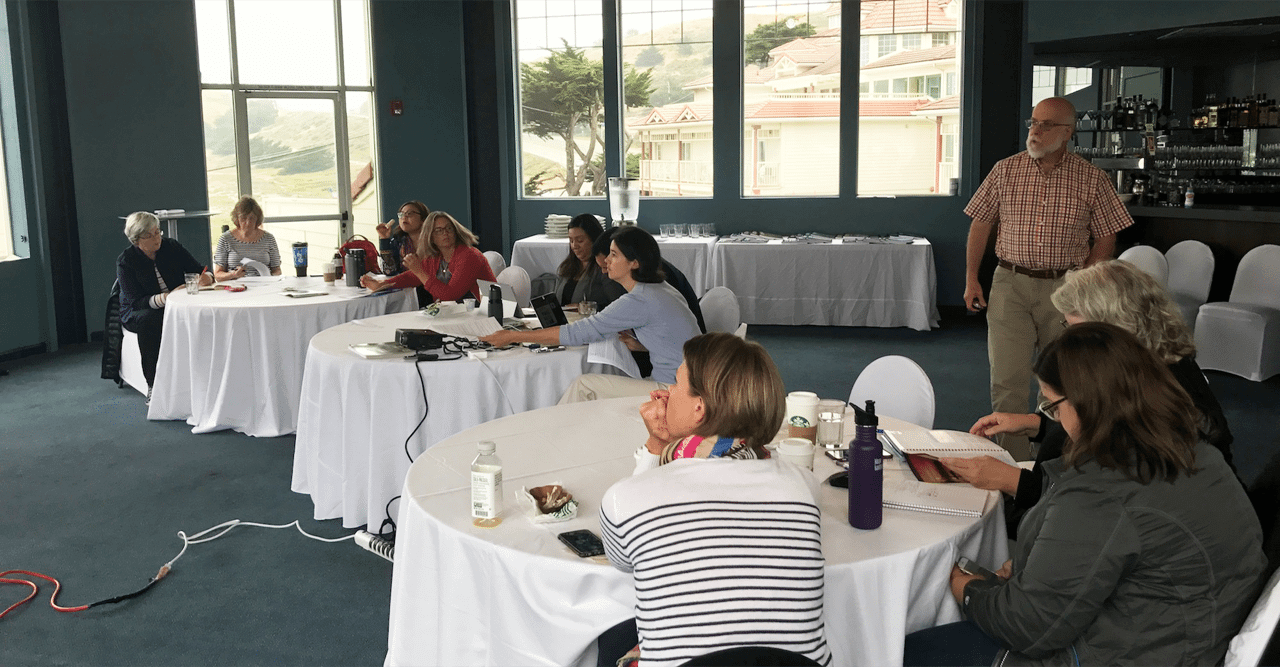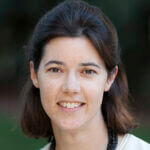We couldn’t have asked for a better setting for our environmental literacy retreat. Thanks to Ten Strands and the Leonardo DiCaprio Foundation, regional site directors from the California History–Social Science Project had the opportunity to gather in mid August in Pacifica to think over how best to integrate environmental literacy into K–12 history–social science (HSS) curriculum. As a bonus, while there we were treated to a spectacular display of humpback whales swimming off shore! For three days, barely a minute passed without some sighting of these beautiful giants. We watched in wonder as whales breached the surface, granting us a glimpse of the teeming life below. So, the tone was set for our work, and we brought our collective experience in teaching history–social science to bear on the exciting task in front of us.
Two things immediately became clear. The first was that incorporating California’s Environmental Principles and Concepts into the HSS classroom enables students to grasp a critical piece of the puzzle in understanding why and how history unfolded the way it did, and why our government and economy look the way they do. Consider, for example, studying the location and size of historic population centers, the types of industries and labor conditions that have emerged over time, the causes and outcomes of war, matters of social justice, and cultural institutions such as suburbs and parks. How much more interesting and comprehensible do these eras and events become when we analyze the effects of geography and climate, the use and regulation of natural resources and systems, and the prevailing ideas throughout history about the value of the environment? My colleagues and I became increasingly convinced that incorporating an environmental lens, alongside the traditional social, economic, and political lenses, will provide students with a more comprehensive understanding of the motivations, possibilities, and constraints of different peoples throughout history and today.
A second insight we gained was the value that HSS instruction brings to the environmental literacy initiative. The discipline of history requires investigations of the past that are framed by questions, an examination of evidence, and an understanding of cause and effect, continuity and change, and perspective or point of view. If the goal of environmental literacy is to help students become decision-makers who are prepared to build a “sustainable, healthy, prosperous, and equitable” society as the Blueprint for Environmental Literacy states, then students will need the skills, habits, and practices learned in a history class. We want them to ask how and why the world operates as it does, and how it came to be this way. If students are to work toward an equitable and sustainable future, they will need to be able to analyze the effects of government policies on the environment, on particular populations, and on the economy. Environmental issues are complex and demand that we consider multiple stakeholders with diverse opinions and needs. Learning to assess perspective is therefore critical. Moreover, students need to understand the power of individual choices and civic participation to affect change. Good history–social science instruction prepares students in these ways, and more.
Multiple times over the three days in Pacifica we reflected on the importance of tapping into the histories of students’ own communities to drive home the points of environmental literacy. Arguably, we understand best the environments in which we live, and it is in a local landscape that students can find compelling examples of the two-way relationship between people and environment. It is also in the local setting that students are likely to find examples of people who are working to improve environmental conditions as a way to improve the community. My colleagues from the UCLA History–Geography Project partner each year with the Automobile Club of America to host a teacher workshop focused on Los Angeles history called Places and Time. One component of Places and Time is a look at the relationship between the city, its people, and the environment. The institute includes a “toxic tour” of Watts led by a member of the Watts Labor Community Action Committee. Teachers in this workshop come away with specific historic examples of environmental injustices, and knowledge about the efforts of local community organizations to rectify issues of unhealthy air, land, and water in the Watts neighborhood. History is full of events that are staggeringly depressing, and while the HSS State Standards and Framework cover many of these, our curriculum is also geared toward preparing students for present and future civic engagement that is informed by an understanding of the past.
It was a privilege to encounter the whales in Pacifica, and as I thought about these creatures it struck me how our global community’s past and present choices shape the quality of the ocean environment. I hope that when students pause to observe their world outside, they will see a dynamic, ever-evolving environment—not unlike our society—and will apply their knowledge to help create an evermore functioning relationship between the two.
The California History-Social Science Project (CHSSP) is a statewide network of scholars and K–12 teachers, dedicated to providing the highest quality history instruction, with a special focus on meeting the needs of English learners, native speakers with low literacy, and students from economically disadvantaged communities. Beginning in 2018, the California History–Social Science Project will implement a variety of environmental literacy programs across its sites.




